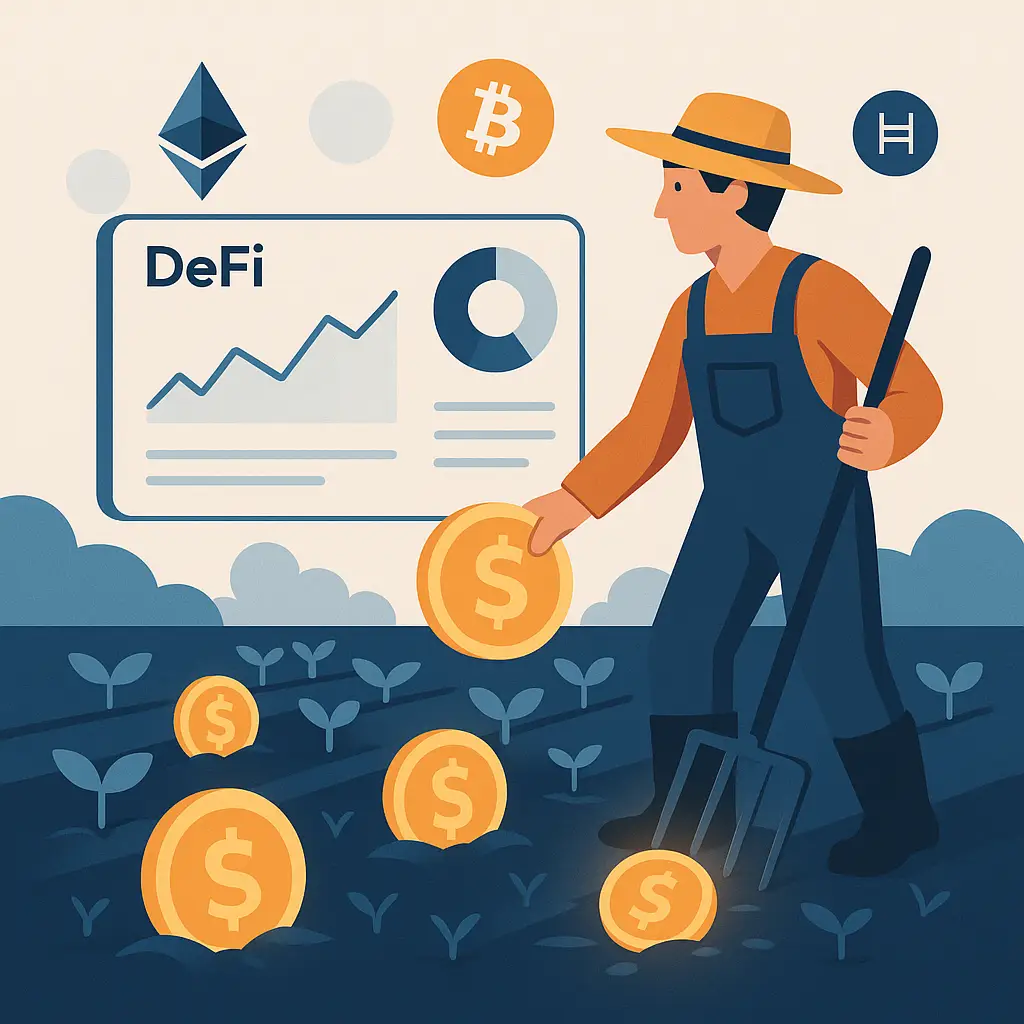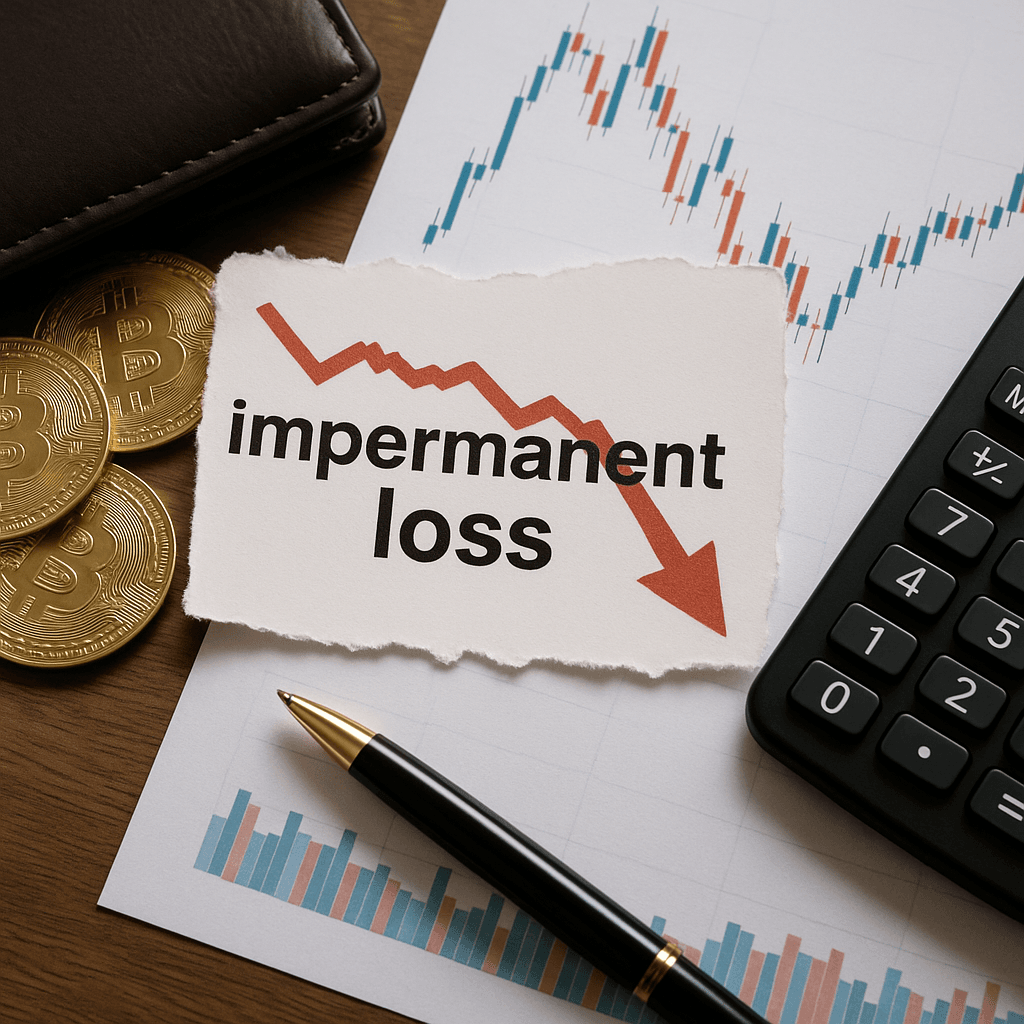Introduction
Yield farming has become one of the most popular ways to earn passive income in the decentralized finance (DeFi) world. At first glance, it might seem like a low-risk strategy—just deposit your crypto and watch it grow. But the truth is, while yield farming can be profitable, it also comes with risks and constantly changing conditions. Still, the high rewards continue to attract users willing to put their tokens to work.
What is Yield Farming?
In basic terms, yield farming involves locking up your cryptocurrency in a DeFi protocol to earn rewards—usually in the form of interest or additional tokens. These platforms rely on smart contracts to manage your deposits and pay out returns, which can range from a few percent to over 100% annually.
There are two common ways your crypto can be used:
- Lending to others: Your locked tokens are loaned out, and borrowers pay interest. You earn a portion of that interest as a yield farmer.
- Providing liquidity to exchanges: Your tokens are used to help decentralized exchanges (DEXs) like Uniswap or Curve facilitate trades. In return, you earn a share of the transaction fees and other incentives like governance or reward tokens.
Some platforms, such as Curve Finance, allow yield farming across different tokens and chains (e.g., Ethereum, Bitcoin, Polygon), and they use optimized algorithms to maximize liquidity and minimize price impact during trades.
Read More: Web3 Unveiled: Your Guide to the Decentralized Internet
What Are the Risks?
While yield farming has its appeal, it’s not without risk. Understanding these risks is key to protecting your investments.
1. Volatility
Crypto prices can swing wildly—especially with low-liquidity tokens. If your assets are locked during a price drop, you might not be able to sell in time to avoid a loss.
2. Impermanent Loss
If you provide two tokens to a liquidity pool (e.g., ETH and HBAR), their value can change unevenly. You could end up with more of the less valuable token, meaning your total value might be lower than if you had simply held the tokens.
3. Rug Pulls
A rug pull is when a project’s creators suddenly pull out all the liquidity and disappear, leaving investors with worthless tokens. This scam usually involves newly launched or hyped-up tokens.
4. Liquidity Drying Up
If other users pull their tokens from the pool, the pool can become illiquid. Low liquidity causes slippage—where you get less value when trying to trade or withdraw. In some cases, this can result in unexpected losses.
5. Changing Rewards
Yield farming rewards change often. You might lock your tokens in a pool with high rewards, only for it to drop unexpectedly. Meanwhile, a better-paying pool may appear, but your assets remain locked.
How Are Yields Calculated?
Returns are usually displayed as APR (Annual Percentage Rate) or APY (Annual Percentage Yield). Some platforms let pool creators manually set the APR, while others use algorithms to adjust rates automatically. Tools like Yearn Finance even move user funds between pools to chase the best returns.
Yields also come from trading fees in liquidity pools—so pools with higher trading volumes typically pay more.
How to Maximize Returns
To get the most out of yield farming:
- Look for flexible lock-up terms so you can quickly move funds to better opportunities.
- Track reward changes regularly to avoid staying in underperforming pools.
- Use trusted platforms with strong security and transparent practices.
Conclusion
Yield farming offers an exciting way to earn passive income from your crypto—but it’s important to weigh the potential returns against the risks. Platforms like Stader Labs on the Hedera network are pushing the space forward by allowing users to stake and yield farm at the same time. As DeFi continues to grow, understanding the basics of yield farming will help you navigate this evolving space wisely.
Hedera, known for its high-speed and energy-efficient hashgraph consensus, supports smart contracts, tokenization, and decentralized messaging. As platforms like Stader integrate with Hedera, the future of secure and accessible yield farming looks brighter than ever.




